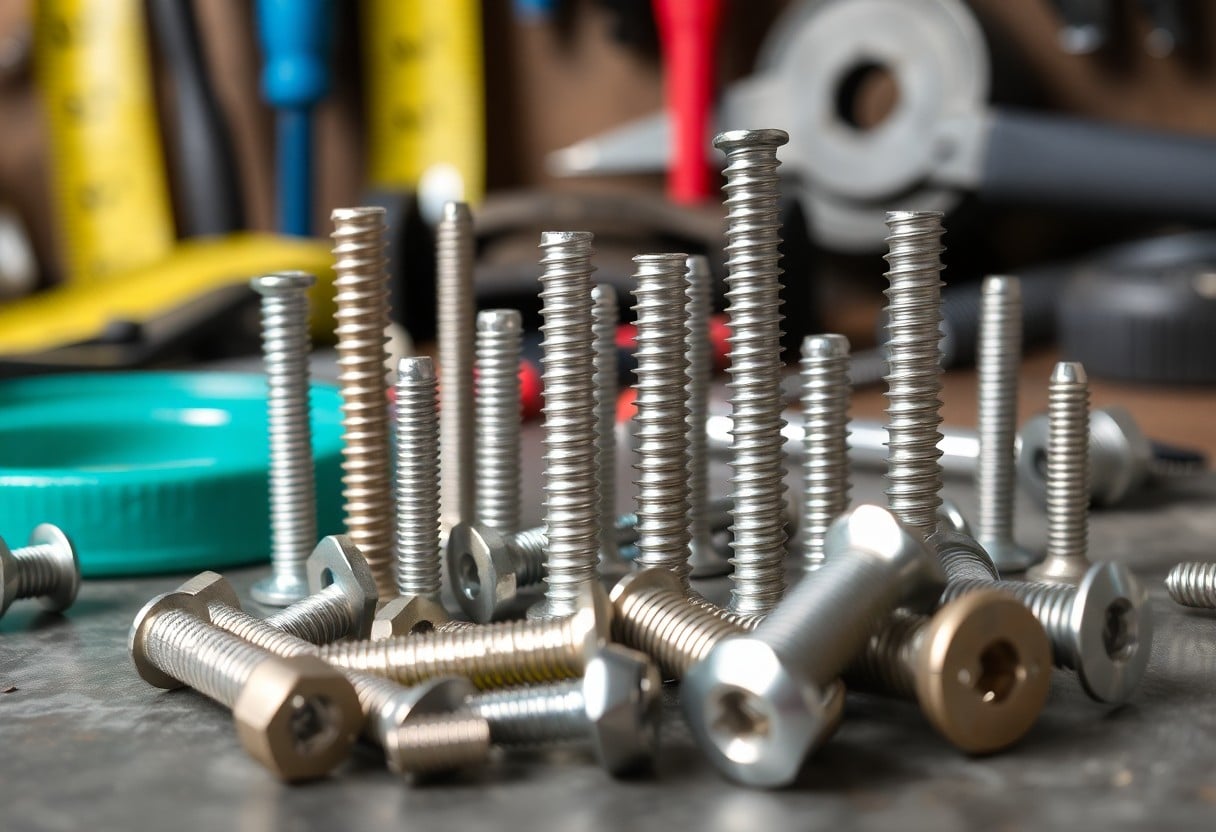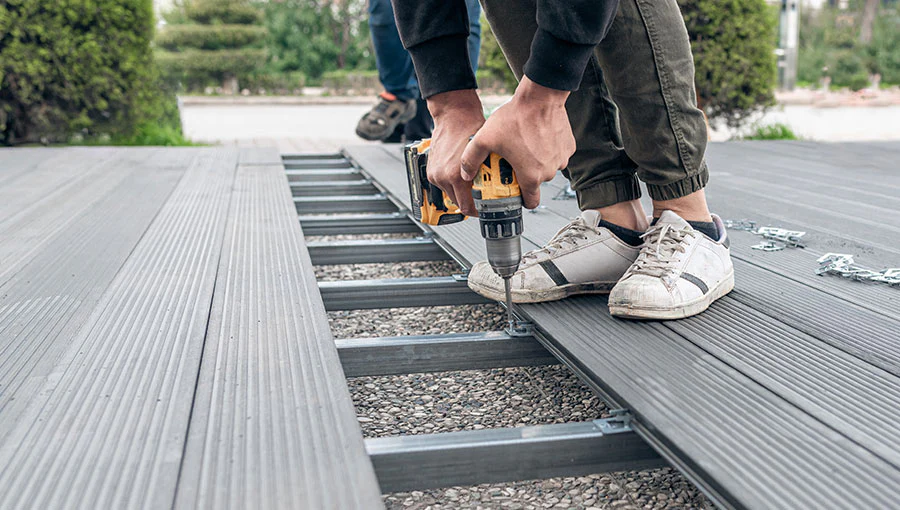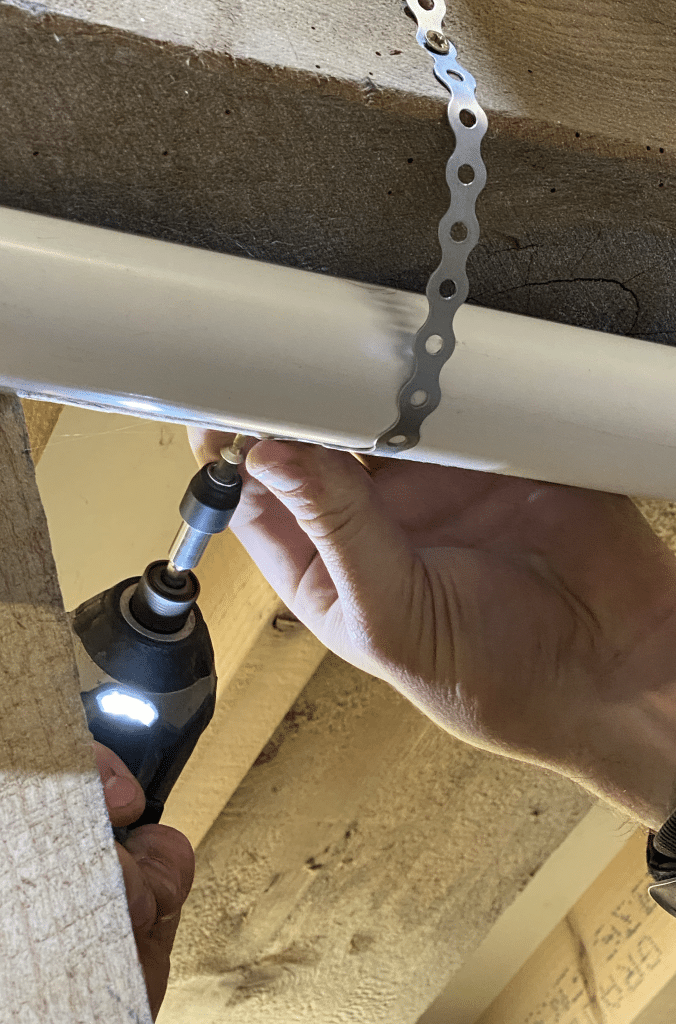Stainless steel screws are renowned for their durability and corrosion resistance, making them a preferred choice across various industries. As you consider your fastening options, it’s important to understand both the advantages they offer, such as strength and aesthetic appeal, and the disadvantages, including potential higher costs and galvanic corrosion risks. This guide will equip you with the knowledge necessary to make informed decisions about using stainless steel screws in your projects, ensuring optimal performance and longevity.
Stainless Steel Screws Key Takeaways:
- Corrosion Resistance: Stainless steel screws provide excellent resistance to rust and corrosion, making them ideal for outdoor and marine applications where exposure to moisture is prevalent.
- Strength and Durability: These screws offer high tensile strength and durability, which allows them to withstand significant loads and stresses, ensuring longevity in structural applications.
- Cost Considerations: While stainless steel screws tend to be more expensive than their counterparts, their lifespan and reduced need for replacements can justify the initial investment in many projects.
Benefits of Stainless Steel Screws
A significant advantage of stainless steel screws lies in their ability to withstand adverse environments. Their corrosion-resistant properties make them ideal for both indoor and outdoor applications, where rust and decay can compromise structural integrity. With various grades available, you can select the perfect type for your specific needs, ensuring longevity and reliability in your projects. Ultimately, investing in stainless steel screws can enhance the durability and performance of your assembly.
Corrosion Resistance

Strength and Durability
Durability is another hallmark of stainless steel screws, providing you with a reliable fastening solution. Their impressive mechanical strength allows them to endure significant loads and stress, making them suitable for various applications, from heavy machinery to delicate fixtures. With proper selection, you can achieve not only a secure fit but also a fastener that stands the test of time and environmental factors.
Even when subjected to harsh conditions, stainless steel screws maintain their integrity due to their high tensile strength and resistance to deformation. This means that you can count on them to resist bending or breaking under pressure. Additionally, you will find that their minimal maintenance requirements further enhance their appeal, as they remain reliable and effective with little attention needed. By using stainless steel screws, you enhance your projects’ safety and performance over time.
Drawbacks of Stainless Steel Screws
Any consideration of stainless steel screws must address their potential drawbacks. While these screws are renowned for their resistance to corrosion, they can sometimes be less suitable for specific environments where extreme conditions or loads are present, leading to issues such as galling or reduced structural integrity over time. Understanding these limitations is necessary to ensure you choose the right fastener for your application.
Cost Considerations
Among the various types of screws available, stainless steel screws tend to be more expensive than their carbon steel counterparts. This increased cost can present challenges in large-scale projects or applications where numerous fasteners are required. Therefore, it is important for you to weigh the benefits of longevity and corrosion resistance against the upfront expenditure.
Potential for Galling
Below the surface, galling presents a significant concern when using stainless steel screws, especially in heavy-duty applications. This phenomenon occurs when the threads of the screws seize together during installation or removal, leading to permanent damage. It’s vital that you apply the appropriate lubrication and use compatible materials to mitigate the risk of galling, as it can lead to frustrating and costly delays in your projects.
Plus, understanding galling is imperative for successful implementation of stainless steel screws. It typically arises from the friction and heat generated during the tightening process, especially in applications involving high torque levels. You should consider using a lubricant or anti-seize compound to reduce friction, and always select the correct type of stainless steel, as some grades are more susceptible than others. Awareness of this issue can help you avoid the significant inconvenience and expense that can result from a seized fastener.
Types of Stainless Steel Screws
Many different types of stainless steel screws are available, each designed for specific applications and environments. These types include:
| Type | Description |
| Pan Head | Common for a variety of fastening tasks. |
| Flat Head | Designed to sit flush with the surface. |
| Hex Head | Useful for providing increased torque. |
| Self-tapping | Ideal for cutting into the material. |
| Lag Screws | Best for heavy-duty applications. |
Recognising the right type of screw can significantly impact the success and durability of your project.
Grades of Stainless Steel
On your journey to selecting stainless steel screws, it’s necessary to understand the various grades available. The most common grades are:
- A2 (304): General-purpose, corrosion-resistant.
- A4 (316): High corrosion resistance, ideal for marine applications.
- A5: Offers superior strength and ductility.
- B8: Used in high-temperature environments.
- B8M: Similar to B8 but more durable in corrosive settings.
The grade you choose will determine the durability and corrosion resistance of your screw.
Common Applications
Along with understanding types and grades, exploring the common applications of stainless steel screws is vital. They are widely used in construction, automotive, marine, and even household items. The versatility of these screws allows them to excel in diverse environments.
But it’s important to note that while stainless steel screws provide excellent corrosion resistance, they are not impervious to environmental damage. In marine applications, for example, exposure to saltwater can lead to pitting corrosion. Proper selection based on your application ensures optimal performance and longevity, protecting your investments against potential failures. Always assess your specific needs to avoid costly mistakes.
Best Practices for Using Stainless Steel Screws
Not adhering to best practices when using stainless steel screws can lead to structural failures and corrosion issues. To maximise the benefits of stainless steel, ensure you choose the right grade for your application, consider the environment, and always pre-drill and use appropriate torque settings during installation. This will help you avoid stripping the screw heads and ensure a secure fit.
Proper Installation Techniques
Across various applications, it’s vital to employ proper installation techniques when using stainless steel screws. Always pre-drill pilot holes to prevent splitting and use a torque wrench to achieve the correct tightness without over-tightening. Furthermore, ensure the screws are compatible with the materials being joined to maintain integrity and avoid galvanic corrosion.
Maintenance and Care
Against common misconceptions, stainless steel does require maintenance to ensure longevity. Regular inspections for signs of corrosion or damage will help you identify any potential issues early. You should also clean the screws periodically, especially in harsh environments, to remove moisture and debris that can trap contaminants.
Even with its corrosion-resistant properties, stainless steel screws can still suffer from environmental factors. Regular maintenance is vital; you should keep an eye out for rust spots, particularly if they are exposed to saltwater or chemicals. Performing routine checks and cleaning with mild soap solution can help maintain their appearance and functionality. Additionally, applying an anti-seize lubricant can prevent galling during removal or adjustments. Neglecting these practices may result in premature failure or diminished performance of your screws.
Comparison with Other Fastening Materials
After exploring stainless steel screws, it is vital to compare them with other fastening materials to understand their unique advantages and disadvantages.
Comparison Table
| Material | Advantages and Disadvantages |
|---|---|
| Stainless Steel | Corrosion-resistant but can be more expensive. |
| Steel Screws | Stronger than stainless steel but susceptible to rust without coating. |
| Plastic/Composite Screws | Lightweight and resistant to corrosion yet less durable under high stress. |
Steel Screws
To evaluate steel screws, you will find that while they provide superior strength for heavy-duty applications, they lack the corrosion resistance of stainless steel. This susceptibility to rust means they often require protective coatings, which may not always be reliable.
Plastic and Composite Screws
Around plastic and composite screws, you’ll notice their appealing properties, such as being lightweight and resistant to rust. However, they often struggle under high-stress conditions compared to metal options.
Comparison with stainless steel screws illustrates that while plastic and composite screws offer significant advantages in corrosion resistance and weight, they may not deliver the same level of strength in structural applications. These screws are particularly beneficial in environments where moisture could lead to rusting of metal screws, yet their lower tensile strength can be a downside for demanding applications. Use them wisely, prioritising factors like load and exposure to elements to achieve the best performance in your projects.
Environmental Impact and Recycling
Unlike many other materials, stainless steel screws have a well-established recycling process that significantly mitigates their environmental impact. Their long lifespan and resistance to corrosion allow for extended use, which reduces the frequency of replacement. When they do reach the end of their life cycle, stainless steel can be effectively recycled, saving natural resources and lowering energy consumption compared to the production of new metal.
Sustainability of Stainless Steel
Sustainability is a key consideration when you evaluate the use of stainless steel screws. The material is often made from up to 70% recycled content, making it an environmentally friendly option. Additionally, the durability and longevity of stainless steel diminish the need for frequent replacements, resulting in lower waste generation over time.
Disposal Practices
Steel is recyclable, making proper disposal practices imperative for maximising its environmental benefits.
This means that when it comes time to remove or replace your stainless steel screws, you should seek out local recycling facilities that accept metal materials. By doing so, you not only help divert waste from landfills but also contribute to the conservation of resources. Improper disposal can lead to increased landfill waste, whereas recycling allows valuable materials to be transformed into new products. Ensure that your disposal practices incorporate recycling whenever possible to enhance sustainability in your projects.
Summing up
On the whole, stainless steel screws offer numerous benefits such as corrosion resistance, durability, and an attractive finish, making them ideal for various applications. However, they can also be more expensive than other materials and may not be suitable in certain conditions, such as in highly acidic environments. To maximise their effectiveness, ensure you select the right grade of stainless steel for your project and consider using compatible materials to avoid galvanic corrosion. By understanding both the advantages and drawbacks, you can make informed decisions that suit your specific needs.
Stainless Steel Screws FAQ
Q: What are the main advantages of using stainless steel screws?
A: Stainless steel screws offer numerous benefits including corrosion resistance, which makes them ideal for outdoor applications or environments exposed to moisture. They have a high tensile strength, providing durability and long-lasting performance. Additionally, stainless steel screws are aesthetically appealing due to their polished finish, making them suitable for visible installations. Their low magnetic permeability also means they are useful in electronic applications where magnetism could interfere with function.
Q: Are there any disadvantages to using stainless steel screws?
A: While stainless steel screws have many benefits, they also come with some disadvantages. One of the main drawbacks is their higher cost compared to other materials, potentially increasing overall project expenses. They can sometimes be susceptible to galling, which is when the threads bind together, making them difficult to install or remove. This can be mitigated by using lubricants or selecting the appropriate screw design. Additionally, not all stainless steels are created equal; some can be less resistant to certain chemicals.
Q: In what environments are stainless steel screws most effective?
A: Stainless steel screws are particularly effective in environments that are prone to moisture, such as marine applications, outdoor constructions, and areas exposed to harsh chemicals. Their corrosion-resistant properties make them a preferred choice for construction in coastal areas, plumbing applications, and any application involving exposure to the elements. However, it’s necessary to use the correct grade of stainless steel, such as 316 for marine use, to ensure optimal performance.
Q: What are the best practices for using stainless steel screws?
A: When using stainless steel screws, it is advisable to pre-drill pilot holes, especially in hard materials, to prevent splitting or cracking. Utilising the appropriate lubricants can help to reduce galling and ensure smoother installation. It is important to match the screw type to the intended application; for example, use self-tapping screws for metal or wood, and choose flat or pan heads based on the desired flush finish. Lastly, ensure to select screws with the correct grade of stainless steel for the specific environmental conditions.
Q: How do stainless steel screws compare to other materials like brass or plain steel?
A: Compared to brass, stainless steel screws have superior tensile strength and are more resistant to corrosion, especially in outdoor or harsh environments. While plain steel screws may offer lower initial costs, they are prone to rust and deterioration unless treated. Stainless steel screws provide a balance of performance and aesthetic appeal that surpasses both brass and plain steel, making them a versatile choice across various applications, despite their higher cost.



